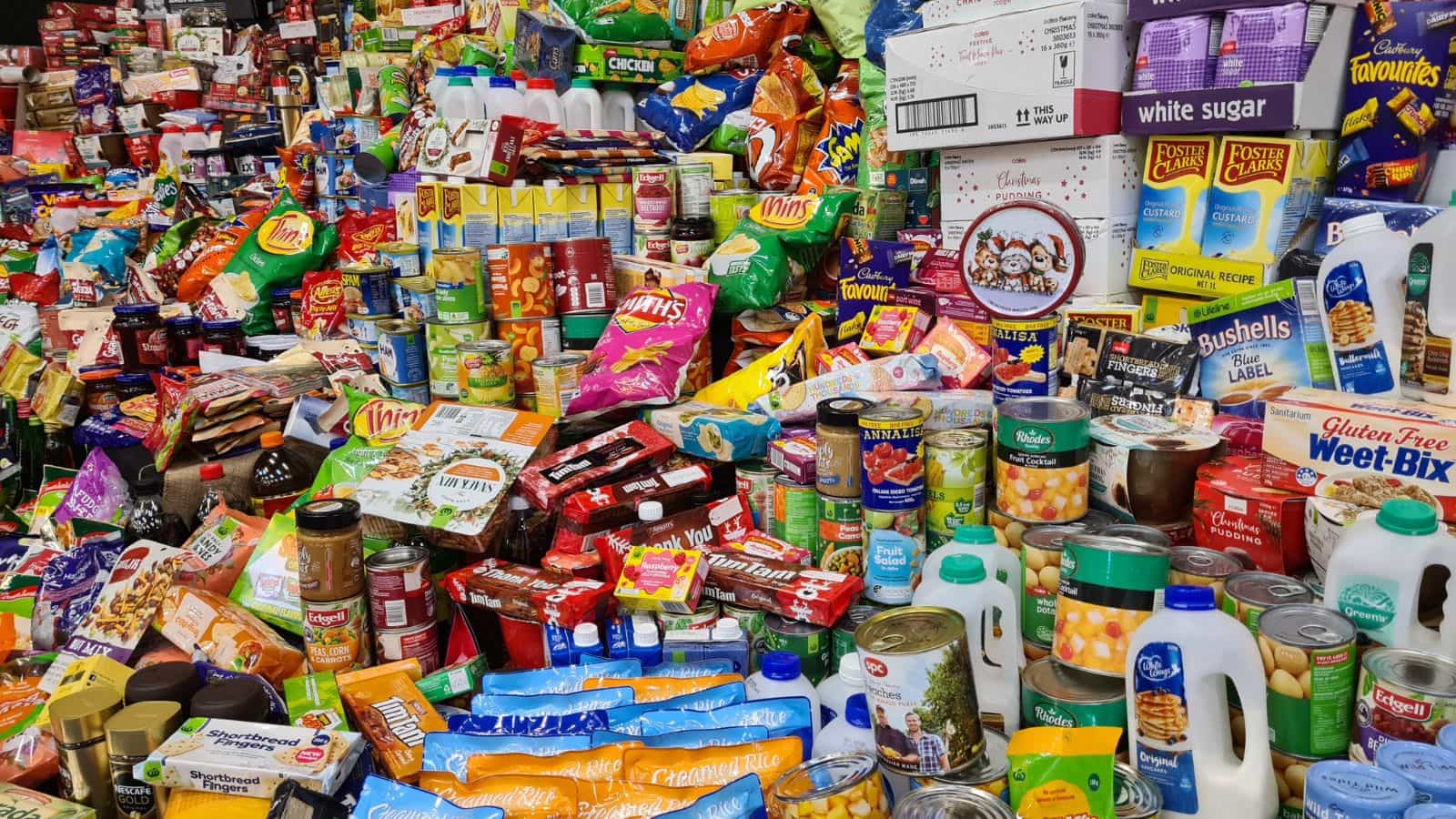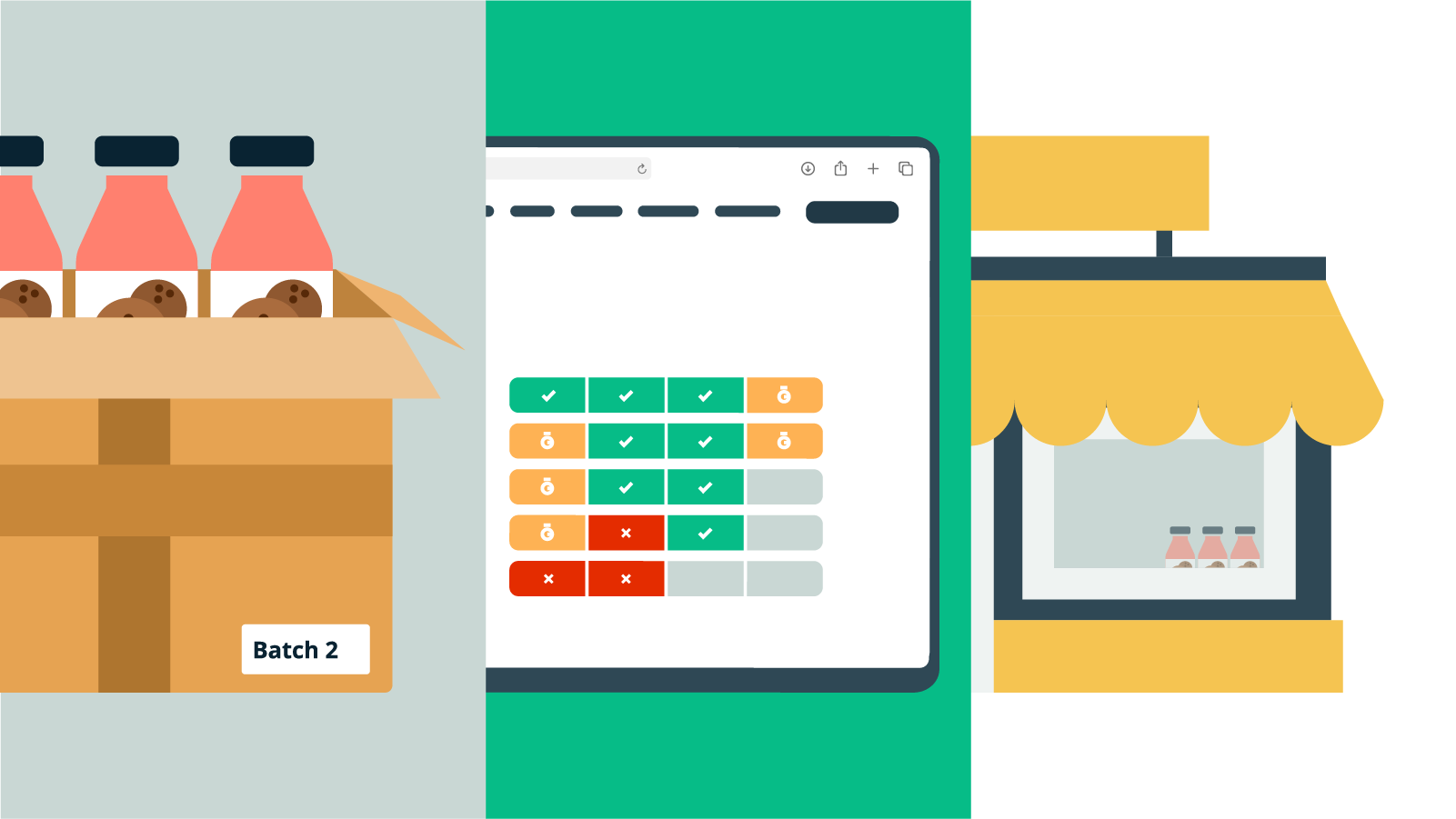The things we need: Everything you want to know about consumer goods
Consumer goods are the finished products or services that satisfy the customer’s needs. Continue reading to learn all about consumer goods and how to manage these within your business.

James Humphreys

Every time you go to the store and pick something off the shelf to purchase, you’re interacting with the consumer goods industry.
These products are designed, manufactured, and distributed with the intent to be sold to consumers for personal or household use. In other words:
They’re the things we need to live our lives
There are all sorts of different types of consumer goods, from food and drink to clothes and electronics. And while we may not think about it often, the production and consumption of these items profoundly impact our economy, environment, and society as a whole.
In this article, we’ll take a closer look at the definition of consumer goods, examine the different types, provide some different examples of each, and compare them to capital goods. We’ll also touch on how you can optimize your business and start producing your own consumer goods.
Download the ultimate guide to inventory management
A comprehensive ebook with everything you need to know about inventory management.
What are consumer goods?
Consumer goods are finished products used by the consumer to satisfy their personal or household needs and wants. These items are produced and/or distributed to be sold in the market.
This used to be a very simple definition, but with the rise of digital products and online services, it’s starting to become more complicated. For example, is a digital book a consumer good? Let’s dig a little deeper to find out.

types of consumer goods?What are the different
Traditionally, there were three types of consumer goods:
- Durable goods
- Nondurable goods
- Services
But as technology has progressed, a fourth category needs to be added, covering intangible or digital goods.
Durable goods
Durable goods, like furniture or appliances, can be used multiple times over a long period.
They’re often expensive, and because they last longer, people usually don’t purchase them as often as other types of consumer good products. The cutoff for this category is usually around three years, meaning anything that is expected to last longer than that is considered durable.
Durable consumer goods examples
The most common examples of durable goods are:
- Furniture (e.g. chairs, tables, beds)
- Appliances (e.g. fridge, oven, washer)
- Electronics (e.g. TV, computer, laptop)
- Vehicles (e.g. cars, trucks, motorcycles)
- Tools (e.g. power drills, saws)
People only purchase these items occasionally, and when they do, it’s usually because their old ones have worn out or broken.
Nondurable goods
Nondurable goods, on the other hand, are items that are used once or for a short time before they’re discarded. This includes things like food and clothing. Because they’re not meant to last, nondurable goods are usually less expensive than durable goods.
Many companies are now introducing something called planned obsolescence or built-in obsolescence into their products. This is when a product is designed to break or become outdated after a certain amount of time, often around one year.
This way, the customer has to keep buying the same product over and over again, generating more revenue for the company.
Built-in obsolescence has moved several products from durable to nondurable, such as phones and laptops. And while it may be good for business, it’s not so great for the environment or the consumer’s wallet.
Nondurable consumer goods examples
While those more expensive consumer product examples may now be considered nondurable, the category is most often associated with lower-cost items like:
- Food
- Clothing
- Toiletries
- Cleaning supplies
- Cosmetics
These are usually used up quickly and need to be replaced often. You probably purchase some of these items weekly, if not daily, making them a big part of the consumer market.
Services
The third category of consumer goods is services. These are consumed and used up in the process, like haircuts or car washes. They can’t be stored or saved for later use, which is what differentiates them from goods.
Services are often provided in combination with nondurable consumer goods. For instance, you might be paying for a cup of coffee and the service of making it.
Examples of services
Different types of services can be classified as consumer goods, depending on their use. For instance, public transportation is a service that’s not usually considered a consumer good because it’s not purchased for personal use.
But if you’re taking a taxi or an Uber, you’re buying a service for your benefit, so that would be considered a consumer good.
Some other examples of services that are considered consumer goods are:
- Restaurant meals
- Movie tickets
- Car repairs
- Laundry service
- Housekeeping
- Childcare
These are just a few examples, but countless other services can be classified as consumer goods.
Intangible goods
With the rise of digital consumer products, goods and services, there’s a new category of consumer goods that needs to be considered:
Intangible and digital goods
These are items that exist in the digital realm and are consumed in some way, like online streaming services or video games.
The key difference between these and traditional goods is that they’re not physical objects that can be touched or held. They exist solely in the digital world and are accessed through electronic devices like computers, smartphones, and tablets.
Another is that these goods are often consumed in a pay-as-you-go model, with customers paying for access to the good on an ongoing basis. This is different from the one-time purchase model of traditional consumer goods.
Even further, with the rise of play-to-earn games, some digital goods are now being purchased with in-game currency that can be earned through gameplay but hold real-world value. These are still considered consumer goods, even though they’re not being purchased in a traditional method.
Intangible consumer goods examples
In 2023, there are countless examples of intangible services and goods that are offered. Some include:
- Online streaming services
- Video games and in-app purchases
- Software as a service (SaaS) products
- Digital books, magazines, and newspapers
- Online courses and educational content
These are just a few examples, but the list goes on and on. If you can think of it, there’s probably a digital or intangible good out there that satisfies that need.
Other classifications
From a business perspective, you can also break down consumer goods into other categories.
Buying habits
One way to look at it is by considering consumers’ buying habits. This would include:
- Convenience goods — These are items that the customer regularly buys and with little thought or effort. Examples include bread, milk, and toilet paper
- Shopping goods — These are items that the customer compares before making a purchase. They may take more time to consider but are usually bigger ticket items
Shopping goods can be further divided into:
- Specialty goods — These are items with unique characteristics or that satisfy a special need. They require more time and effort to find the right product. An example is a wedding dress
- Unsought goods — These are items that the customer doesn’t know they want or need until they see them. An unexpected purchase, like an impulse buy at the checkout line, would fall into this category
Companies can prioritize their marketing efforts by understanding which category their product falls into for their target market.
Fast-moving vs slow-moving
Another way to look at industry consumer goods is by how fast they “move” or turn over. This is important for businesses to know because it helps them understand how much inventory they need on hand and how often they need to restock.
- Fast-moving consumer goods (FMCG) — These are items that sell quickly and have a short shelf life. They’re also known as “consumer packaged goods” (CPG). Examples include soft drinks, cereals, and toiletries
- Slow-moving consumer goods (SMCG) — These items have a longer shelf life and don’t need to be replaced often. Examples include furniture, cars, and major appliances
Not all businesses will carry both FMCGs and SMCGs, but it’s important to know the difference so you can understand the needs of your target market.
Capital goods vs consumer goods
For a company that is looking to improve inventory management, there will also be a distinction between consumer goods and capital goods.
- Consumer goods are used by the final customer and generate revenue. An example would be a finished car
- Capital goods are used in the production process but don’t generate revenue on their own. An example would be a machine used to make cars in a factory
This distinction is important for businesses because it will help them understand where to allocate resources.
Get more control over your consumer goods
Now you know all about consumer goods. The next step is to master these items. Systems like Katana help manufacturers automate the mundane tasks of handling finished goods inventory.

Manage your consumer goods with ERP software
With help, it can be easier to keep track of all this information.
Where there is a need, you’ll usually find a digital fix, which is exactly what happened with the introduction of ERP solutions like Katana.
ERP, or enterprise resource planning, is a type of software that helps businesses manage their inventory, finances, and supply chain. It’s the perfect tool for managing consumer goods because it can help streamline production and keep track of all the different types of products.
If you’re a business owner or manager, it’s critical to understand the different types of consumer goods and how they fit into your company’s operations. Get started by booking a demo with Katana today to get a better handle on them.

James Humphreys
Table of contents
Get inventory trends, news, and tips every month
Get visibility over your sales and stock
Wave goodbye to uncertainty with Katana Cloud Inventory — AI-powered for total inventory control